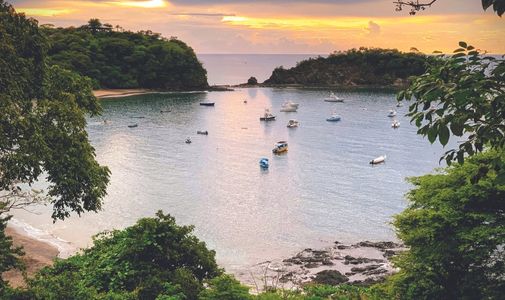Sara E. Says:
We are going to Costa Rica in September and want some idea of whether it’s safe to drive around the country or not. Thanks and looking forward to hearing from you.
IL Executive Editor Jennifer Stevens Says:
 Hi Sara,
Hi Sara,
Driving is a great way to see the Costa Rican countryside, you don’t have to lug your baggage on and off a plane or bus, and you go wherever you want at your own pace.
Costa Rican roads are steadily improving, at least between the major cities. The 48-mile Caldera Highway, for example, opened as a toll road in 2010 and continues to be extended, cutting travel time between San José and the popular destination of Jacó to a little over an hour, compared with about two hours before the highway opened.
But before driving from one city to another, it’s best to consult a knowledgeable expat or local, preferably one who has recently driven the route you plan to take. Ask about the condition of the road as well as about interesting sites and restaurants along the way. If you’re staying at a hotel, the staff may be able to help you with this.
It’s also increasingly common for hotels in Costa Rica to offer packages of a room and rental car. If you plan to drive when you visit, ask about car rentals when you shop for a hotel.
To improve the chances your journey will be trouble free, take these simple, but effective, precautions:
- If possible, don’t drive alone. Remember, there’s safety in numbers.
- Avoid traveling after dark. Driving on unfamiliar or poorly lit roads filled with pedestrians, bicycles, potholes, and farm animals can be dangerous, so avoid them if possible.
- Keep valuables out of sight in the car, and don’t wear jewelry that’s obviously pricey.
- Park in secured lots whenever possible.
- Put a small Costa Rican flag in your window or a Spanish language newspaper on your dashboard—this signifies you are a “local” and might be a deterrent for thieves looking for tourists.
One final note on Costa Rica’s capital city, San José: The city has a maze of dangerous one-way streets, ambiguous stop signs, and reckless drivers, so don’t drive there unless you’re very familiar with the city. Instead, take taxis or Uber, which are cheap.
Try to take a taxi equipped with a meter, as most of them are in the city. Regardless of whether the taxi has a meter, ask the driver how much you can expect the fare to be. Try to negotiate down or simply don’t get in if the amount seems too high.
You can get more insider information about Costa Rica at our Fast Track Costa Rica Conference taking place in San José this June. Seats are filling up fast, but you can still book a spot here.
Got a Question?
Send your thoughts to mailbag@internationalliving.com. We’ll post and respond to as many of your emails as we can right here in the e-letter.

